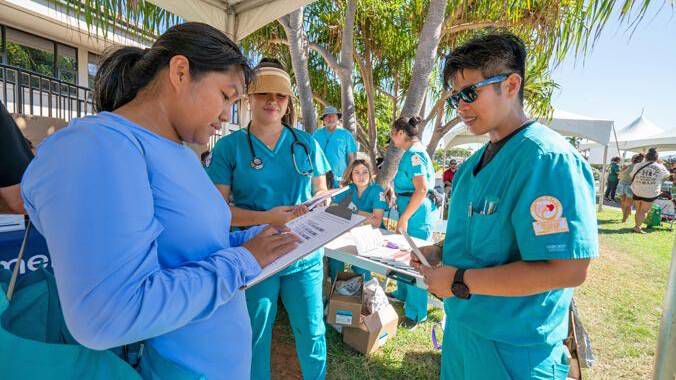Residents of neighbor island and rural communities face numerous challenges — from long ambulance response times to costly and unreliable non-emergency transportation to lack of coverage for travel-related expenses — that their counterparts in urban Honolulu do not when trying to access timely and affordable health care, according to a new report by the University of Hawaii Rural Health Research and Policy Center.
What You Need To Know
- Research for The Impacts of Transportation and Travel Access of Rural Health in Hawaii included an extensive literature review and interviews with 40 subjects representing heath care, transportation services and insurance
- As the report notes, while approximately 30% of Hawaii’s population lives in rural areas, most specialty care is only available on Oahu. The state’s only Level 1 trauma center, the Queen’s Medical Center, is also located in Honolulu
- The report takes special note of the precarious position of pregnant women in rural areas, who often need to travel to Oahu or Maui for specialty services or risk being transported via medevac during labor
- The report included several policy options, including enhancing emergency air and ground ambulance fleets
“Improving access will require coordinated efforts across healthcare, transportation and policy sectors,” said RHRPC policy and data analyst John Desfor. “We hope this research will guide meaningful action to improve transportation access for healthcare in rural communities across Hawaiʻi.”
Research for The Impacts of Transportation and Travel Access of Rural Health in Hawaii included an extensive literature review and interviews with 40 subjects representing health care, transportation services and insurance. The four-part report, which includes a compilation of policy options for addressing key issues, was authored by Desfor, Keilyn Kawakami, Monica Ho, Diana Shaw, Amy Ma, Tetine Sentell and Aimee Malia Grace.
As the report notes, while approximately 30% of Hawaii’s population lives in rural areas, most specialty care is only available on Oahu. The state’s only Level 1 trauma center, the Queen’s Medical Center, is also located in Honolulu.
“While there are health care services offered on neighbor islands, the capabilities and capacity may be insufficient due in part to the provider workforce shortage, small number of facilities, and limited technology,” the report states. “Given these challenges, rural communities tend to have higher rates of morbidity and mortality.”
Residents of Molokai and Lanai, who are serviced by just one or two commercial airlines, face particular challenges, including frequent delays and flight cancellations.
“When flights are delayed or canceled, neighbor island residents are not able to receive their highly needed care and must reschedule with their Oahu-based provider, which can take up to several months and can cause additional health issues,” the report states.
Neighbor Island patients in need to emergency care on Oahu are prone to transportation-related delays that can have a direct impact on their health. Even prior to transport to Honolulu via air ambulance, patient care may be delayed as ground ambulances travel extended distances to and from geographically remote areas. Response times may also be affected by ambulance shortages in some areas.
Meanwhile, the cost of air travel for routine appointments on Oahu can be prohibitive for some patients. The report notes that Medicaid is one of the few insurers that fully covers non-emergency medical transportation. And while some private insurers may offer NEMT coverage, this rarely includes ground transportation, food or lodging.
The report takes special note of the precarious position of pregnant women in rural areas, who often need to travel to Oahu or Maui for specialty services or risk being transported via medevac during labor.
“Given the limited prenatal services, many pregnant women forgo early and adequate prenatal care when pregnant or receive care from a (primary care provider) as opposed to an (obstetrics and gynecology) specialist,” the report stated. “In Hawaii, pregnant women are covered under Medicaid plans for up to 12 months after birth or pregnancy termination. However, for those that are forced to relocate to another island to complete their pregnancy, lodging and other costs are not covered by all insurances, with the expenses falling on the patient.”
The report included several policy options, including:
- Enhancing emergency air and ground ambulance fleets
- Supporting community paramedicine programs and expand primary care teams
- Mandating non-emergency medical transportation coverage in Medicare and private/employer-based insurance in Hawaii
- Establishing a grant program for community-based organizations to support housing for maternal-fetal patients relocating for prenatal and delivery care
- Supporting regional health hubs and mobile maternal health clinics in rural areas
- Expanding interisland flight programs and explore cost-effective and sustainable alternative modes of transportation for health services
- Addressing airline reliability concerns and increase airline competition by leveraging the U.S. Department of Transportation Essential Air Service program
- Enabling hospitals and clinics to be reimbursed for transportation
Michael Tsai covers local and state politics for Spectrum News Hawaii. He can be reached at michael.tsai@charter.com.
